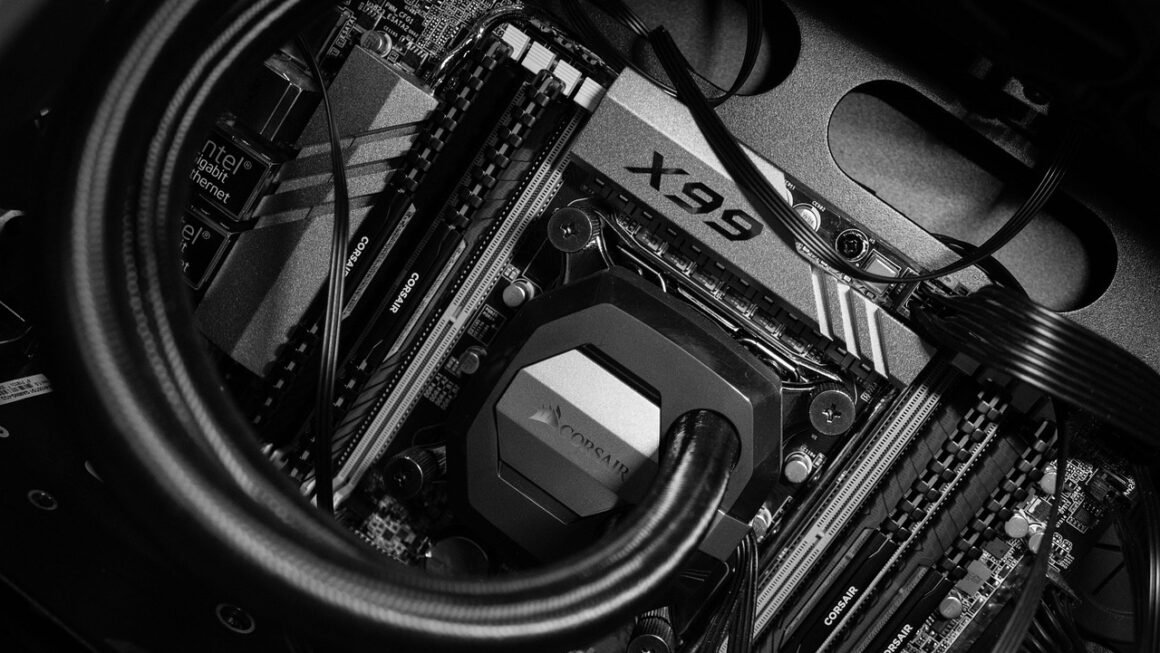Security tokens are rapidly changing the landscape of finance, bridging the gap between traditional assets and the exciting world of blockchain. Offering enhanced transparency, liquidity, and accessibility, security tokens represent a new era of investing and capital raising. This comprehensive guide will explore what security tokens are, how they differ from other digital assets, their advantages, regulatory landscape, and future potential.
Understanding Security Tokens
What Are Security Tokens?
Security tokens are digital representations of ownership in an asset, such as equity in a company, real estate, or debt. They are issued on a blockchain and subject to securities regulations, just like traditional securities. This means they must comply with laws governing securities offerings, like registration requirements or exemptions.
- Unlike utility tokens, which grant access to a network or service, security tokens represent a financial stake.
- They are programmable, allowing for automated dividend payouts, voting rights, and other governance features.
- Security tokens leverage blockchain technology to enhance transparency, efficiency, and reduce intermediaries.
Security Tokens vs. Utility Tokens vs. Cryptocurrency
It’s crucial to distinguish between security tokens, utility tokens, and cryptocurrencies:
- Security Tokens: Represent ownership of an asset or equity and are subject to securities regulations. Think of them as digital stocks, bonds, or real estate investment trusts (REITs).
- Utility Tokens: Grant access to a specific platform, product, or service. They are not designed as investments and aim to provide a function within a particular ecosystem. Examples include tokens used for discounts on a platform or for accessing premium features.
- Cryptocurrencies: Designed as digital currencies or a medium of exchange. Examples include Bitcoin and Litecoin. While some cryptocurrencies may exhibit security-like characteristics, the primary function remains currency.
The “Howey Test” is often used to determine if a digital asset is a security. It assesses whether an investment of money is made in a common enterprise with the expectation of profit derived from the efforts of others.
Key Features of Security Tokens
- Fractional Ownership: Security tokens enable the fractionalization of assets, making it easier for smaller investors to participate in traditionally high-value investments. For example, real estate or fine art can be divided into smaller, more affordable tokenized shares.
- Automated Compliance: Smart contracts can be programmed to ensure compliance with securities regulations, such as KYC/AML requirements.
- 24/7 Trading: Security tokens can be traded 24/7, 365 days a year, increasing liquidity and accessibility for investors globally.
- Transparency and Auditability: Blockchain provides a transparent and immutable record of transactions, enhancing trust and accountability.
- Reduced Costs: By automating processes and eliminating intermediaries, security tokens can significantly reduce transaction costs.
Benefits of Security Tokens
Enhanced Liquidity
Security tokens can significantly enhance the liquidity of previously illiquid assets. Traditionally, assets like real estate, private equity, and art can be difficult to buy or sell quickly. Tokenization changes this by:
- Making fractional ownership accessible, broadening the potential investor base.
- Enabling 24/7 trading on global exchanges.
- Reducing the administrative burden associated with asset transfers.
For example, a real estate property tokenized into smaller fractions allows more investors to participate. They can buy and sell these fractions easily on a security token exchange, providing increased liquidity compared to traditional real estate transactions.
Increased Transparency and Efficiency
Blockchain technology provides unparalleled transparency and efficiency to the securities market. This translates into:
- Reduced reliance on intermediaries like brokers and custodians.
- Lower transaction costs.
- Faster settlement times.
- Improved regulatory oversight through auditable records.
Imagine a company distributing dividends to its shareholders. With traditional methods, this process involves multiple intermediaries, can take days, and incurs significant administrative costs. With security tokens, the dividend distribution can be automated via smart contracts, processed in minutes, and at a fraction of the cost.
Democratization of Investment Opportunities
Security tokens can democratize investment opportunities by:
- Lowering investment minimums, allowing smaller investors to participate.
- Providing access to previously exclusive asset classes, such as private equity or venture capital.
- Creating a more inclusive and accessible investment ecosystem.
For instance, a small business seeking capital can issue security tokens to raise funds directly from investors worldwide, bypassing traditional venture capital firms or banks. This gives everyday investors the chance to invest in promising startups and share in their success.
Automated Compliance and Governance
Smart contracts can automate compliance and governance processes, reducing the risk of human error and improving regulatory adherence. This includes:
- Automated KYC/AML checks for investors.
- Built-in restrictions on transferability based on investor location or accreditation status.
- Automated dividend payouts and voting rights management.
For example, a security token can be programmed to automatically restrict transfers to investors from sanctioned countries, ensuring compliance with international regulations.
Regulatory Landscape of Security Tokens
Overview of Regulations
The regulatory landscape for security tokens varies depending on the jurisdiction. In the United States, security tokens are generally regulated by the Securities and Exchange Commission (SEC) under existing securities laws. Other countries, such as Switzerland and Singapore, have also developed frameworks for regulating security tokens.
- United States: The SEC uses the “Howey Test” to determine if a digital asset is a security. Security token offerings (STOs) must comply with securities laws, including registration requirements or exemptions.
- Switzerland: Switzerland has established a regulatory framework that treats security tokens as securities, requiring compliance with securities laws.
- Singapore: The Monetary Authority of Singapore (MAS) has provided guidance on the regulatory treatment of digital tokens, including security tokens.
- European Union: The EU’s Markets in Crypto-Assets Regulation (MiCA) aims to harmonize the regulatory treatment of crypto-assets, including security tokens, across member states.
Compliance Considerations
Issuers of security tokens must carefully consider the following compliance requirements:
- Securities Registration: Registering the offering with the relevant regulatory body or qualifying for an exemption, such as Regulation D in the US.
- KYC/AML Compliance: Implementing robust Know Your Customer (KYC) and Anti-Money Laundering (AML) procedures to verify investor identities and prevent illicit activities.
- Transfer Restrictions: Ensuring that tokens are only transferred to eligible investors and in compliance with applicable regulations.
- Investor Disclosures: Providing investors with accurate and complete information about the offering, including risks and potential returns.
Challenges and Opportunities
The evolving regulatory landscape presents both challenges and opportunities for the security token industry:
- Challenges: Navigating the complex and sometimes unclear regulatory frameworks can be daunting for issuers.
- Opportunities: Clear and consistent regulations can provide certainty and encourage greater adoption of security tokens.
- Collaboration: Industry stakeholders must work together with regulators to develop sensible and balanced regulations that foster innovation while protecting investors.
Use Cases for Security Tokens
Real Estate Tokenization
Real estate tokenization involves representing ownership of a property as digital tokens on a blockchain. This has several benefits:
- Fractional Ownership: Investors can purchase fractions of a property, making real estate investment more accessible.
- Increased Liquidity: Tokens can be traded more easily than traditional real estate assets.
- Reduced Costs: Tokenization can reduce transaction costs by eliminating intermediaries and streamlining processes.
Example: A luxury apartment complex in New York City is tokenized, allowing investors to purchase fractions of ownership for as little as $100. This enables smaller investors to participate in the real estate market and diversify their portfolios.
Equity Tokenization
Equity tokenization involves representing shares of a company as digital tokens on a blockchain.
- Access to Capital: Companies can raise capital more efficiently by issuing tokens to a global investor base.
- Enhanced Liquidity: Tokens can be traded on security token exchanges, providing liquidity to shareholders.
- Automated Governance: Smart contracts can automate dividend payouts and voting rights management.
Example: A startup in Silicon Valley tokenizes its equity, allowing it to raise capital from accredited investors around the world. The tokens are programmed to automatically distribute dividends and grant voting rights to token holders.
Debt Tokenization
Debt tokenization involves representing debt instruments, such as bonds or loans, as digital tokens on a blockchain.
- Increased Transparency: Blockchain provides a transparent record of debt issuance and repayment.
- Reduced Costs: Tokenization can reduce the costs associated with issuing and managing debt.
- Improved Accessibility: Tokenized debt can be more easily accessible to a wider range of investors.
Example: A corporation issues tokenized bonds to raise capital for a new project. The tokens are programmed to automatically pay interest to token holders on a set schedule.
Future of Security Tokens
Trends and Predictions
The security token industry is poised for significant growth in the coming years. Several trends and predictions are shaping its future:
- Increased Adoption: As regulatory frameworks become clearer and more established, adoption of security tokens is expected to increase across various industries.
- Institutional Involvement: More institutional investors are expected to enter the security token market, driving further growth and liquidity.
- Interoperability: Efforts to improve interoperability between different blockchain networks will facilitate the transfer and trading of security tokens.
- Innovation: New and innovative use cases for security tokens are expected to emerge, further expanding the market.
Potential Impact on Finance
Security tokens have the potential to transform the financial industry in several ways:
- Democratization of Investment: Making investment opportunities more accessible to a wider range of investors.
- Increased Efficiency: Streamlining processes and reducing costs.
- Enhanced Transparency: Improving transparency and accountability.
- Innovation: Driving innovation and creating new financial products and services.
The convergence of blockchain technology and traditional finance will unlock new opportunities for investors, issuers, and regulators alike. Security tokens are poised to play a central role in this transformation.
Conclusion
Security tokens represent a revolutionary step forward in the evolution of finance, offering a powerful blend of blockchain technology and traditional asset classes. By understanding their benefits, navigating the regulatory landscape, and exploring diverse use cases, investors and businesses can unlock the immense potential of security tokens. As the industry matures and adoption increases, security tokens are poised to reshape the financial landscape, creating a more transparent, efficient, and accessible investment ecosystem for all.



